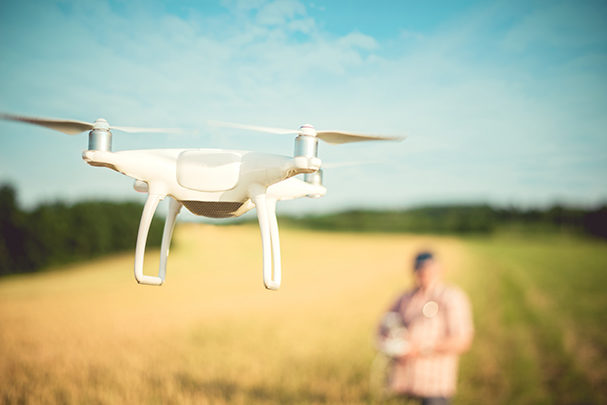Alta Innovation is a company focused on creating innovative solutions for agriculturalists. They have recently developed a new method of using precision equipment to aid producers in eliminating rodent populations in their fields.
The system uses a series of drones to track rodent paths to identify the areas of the field that need to be addressed. That data can then be used to precisely distribute poison in the most effective areas of the field.
In alfalfa fields, this could extend the growing season by reducing crop loss in a product that is harvested several times a year and yield a higher return to the producer. Early detection of the pests could reduce loss in fields that may be more susceptible to damage because the stands last for multiple years and the use of mechanical techniques to remove the burrows isn’t an option.
The drone system implements the same method of detection that is used by some raptors, such as kestrels. This method detects the paths rodents use to move around the field from an aerial view and then lays out the view into a map of the field and traces out the paths.
Alta verified the system by then walking the fields where the system detected rodent burrows and identifying rodent burrows. After three seasons of this, Alta was able to identify around 70% of the rodent burrows correctly. The company is still working to fine-tune the system to increase the percentage of burrows detected.
In the last two growing seasons, Alta has also implemented a system called Gaya, which utilizes the technology to disperse poison granules around the burrows. In the process of monitoring the effectiveness of the system, Alta Innovation noticed that treated fields had a significantly lower rodent population when compared to an untreated field, despite the study being done before harvest when the alfalfa quality was the highest. A patent for the drone scattering system has been submitted.
The goal of the system is to clear the rodents effectively, without using any unnecessary poison granules. Additional granules being used can lead to difficulty in complying with regulated materials, as well as the potential damage that can be incurred by other animals in the area. The study conducted by Alta Innovation reduced the amount of poison used to clear a field by 95% to 97%.
The effectiveness of this method could change the way rodents are dealt with in modern agriculture. The scattering of the granules took one employee and less than 45 minutes. The cost of implementation of the system and the availability to producers is still unknown and could be a major obstacle, but the use of a more effective pest control may be a major advantage to any producer with a rodent problem.
To learn more about the system of precise control of rodents in alfalfa fields using drones, see the proceedings from the 2019 Western Alfalfa and Forage Symposium. ![]()

-
Joy Hendrix
- Editor
- Progressive Forage
- Email Joy Hendrix
PHOTO: Implementing drone technology into your rodent management program could make it more effective than you thought possible. Getty Images.









